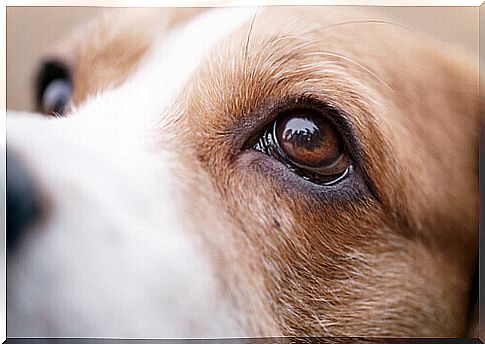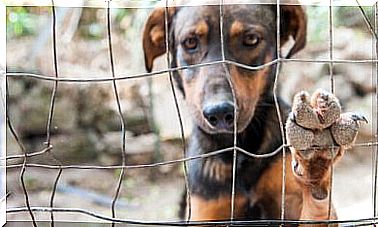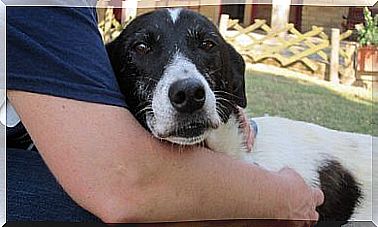Ocular Thelaziosis In Dogs: Causes, Symptoms And Treatment

This pathology, more frequent in summer, is transmitted by the “fruit fly” and affects the mucous membranes of dogs. In the following article we will show you the causes, symptoms and treatment of ocular thelaziosis in dogs, so that you can detect it in your four-legged friend and resolve it as quickly as effectively.
Causes of ocular thelaziosis in dogs
Also known as the “eastern eye worm”, Canine Ocular Thelaziosis is a parasitic disease caused by some nematode worms that measure between 7 and 17 millimeters in length. These hide under the eyelid membrane and between the nasolacrimal ducts.
The transmitter of the disease is the fruit fly, which sucks up the eye secretion and uses this substance to deposit its eggs. When they hatch, the larvae remain in the conjunctival sac of the eye for three weeks while they continue to grow.
Thelaziosis is very common in dogs and cats, although it can also affect other species such as wolves and foxes, as well as humans themselves.
Symptoms of canine ocular thelaziosis
Dogs with this problem can exhibit a wide variety of eye ailments. These include: excessive lacrimation, conjunctivitis, increased production of cisps, involuntary contraction of the eyelids, ulcers and inflammation of the cornea.
If not treated in time, Ocular Thelaziosis can cause serious infections and the production of a very high number of worms, which cause temporary or even permanent blindness .
If you have a dog, you will need to check his eyes often to detect the problem . In the case of Thelaziosis you will notice an important inflammation with the release of a white or greenish substance, which attracts more flies and spreads the disease. The dog is also likely to change some habits, starting to rub his face with his front paws, in order to mitigate the itching.

You will have to pay attention and observe if flies fly around the animal, because this means that they feed on its eye secretions. If you gently open the eyelid of the animal, you will see the proliferation of thin white worms that move quickly in front of the retina, trying to hide from the light.
Prevention and treatment of canine ocular thelaziosis
It is essential to check for the possible presence of this dangerous infection in dogs that live outdoors or in gardens where there are fruit trees, as these are a favorite of the fly that causes thelaziosis. Also pay close attention to rubbish left around too long before throwing it out: it could attract other insects.
The best advice, as far as prevention is concerned , is to protect your four-legged friend with the famous pipettes for dogs, which prevent the development of fleas, ticks and other parasites such as fly larvae. This application should be done throughout the year but with more attention during the summer, when there are more chances of suffering from infectious and bacterial diseases.
If you also have small children at home – between three and six years of age – you need to be even more careful. Your children are particularly vulnerable to infections, especially in summer and autumn, precisely in the months when the fly is most active.
Veterinary treatment against ocular thelaziosis
Once you have identified the worms in your dog’s eye, it is a priority to take him to the vet for their removal. The procedure is done manually, with tweezers or sterile swabs, once the area has been washed with physiological saline.

In addition, the doctor will apply a nematicide drug to prevent the growth and development of any eggs possibly still present in the eye. They are in fact very difficult to recognize and eradicate. In the event that the dog’s ocular thelaziosis is treated in time, the negative symptoms disappear after just three days.
Dogs that have suffered more serious consequences, such as ulcers or keratitis, should receive more thorough treatment. The vet will choose the most suitable method of care for each specific case. The treatment will end only when you are completely sure that there are no more worms or eggs in the eye of your four-legged friend.









